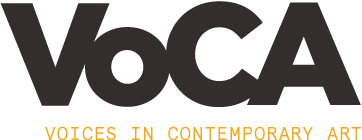Editor’s Note
We are pleased to be launching the second season of VoCA Journal with an issue dedicated to the work of progressive artist-endowed foundations. Contributors to this issue include leaders from the Jay DeFeo, Helen Frankenthaler, Joan Mitchell, Noah Purifoy and Dedalus foundations. While they vary in size and scope, each of these organizations is predicated on the belief that preserving the legacy of their founding artists is not limited to the care and promotion of individual bodies of work, but also involves supporting future generations of artists and the communities in which they live.
In “Charting a Course for the Helen Frankenthaler Foundation,” Elizabeth Smith reflects on what has been achieved in the three years since she took the helm of the organization. During this period of heady growth, the Foundation renovated a light-filled space in Chelsea that now welcomes researchers, curators, artists, and students for programs that include lectures, publication launches, and study sessions of materials drawn from the Foundation’s archives. The Foundation is making its first grants to organizations of special significance to Frankenthaler, and in the coming year will embark on a series of programs that reach beyond Frankenthaler’s circle to involve new collaborators. Smith also speaks candidly about some of the challenges and unexpected developments facing her young organization.
A conversation between Jack Flam and Katy Rogers highlights guiding principles for the Dedalus Foundation. Flam explains that at its inception in 1981, Robert Motherwell named the foundation for himself, but he changed the name shortly before he died to emphasize that the foundation’s purpose would extend beyond preserving his own legacy as an artist. The Dedalus Foundation’s activities are inspired by Motherwell’s interests in modernist literature, music, and dance, in addition to the visual arts. Rogers also discuses the ambitious catalogue raisonné of Motherwell’s paintings and collages, and elaborates on the some of the ways that the Dedalus Foundation supports arts education for students at all levels, from young children to senior scholars.
Similarly, a roundtable conversation amongst colleagues at the Joan Mitchell Foundation surfaced shared interests in supporting arts education and community development. Through programs that nurture artists at all stages of their careers, the Joan Mitchell Foundation aims to “foster a culture of cooperative learning and collaboration which also has the potential to reverberate within and beyond the field.” As such, intergenerational and peer-to-peer exchange is central to the work they do. Programs such as CALL (Creating a Living Legacy), which pairs mature artists who have requested assistance documenting their life’s work with younger artists trained as archivists, provide valuable support for all participants. In the words of Shervone Neckles Ortiz, these initiatives “leverage the body of knowledge, resources, and abilities within the community to help us to make the micro and macro system-level changes artists value most.”
Two articles track the evolution of the Noah Purifoy Foundation, beginning with Purifoy’s experiences as an artist and arts advocate in Los Angeles and San Francisco, and leading up to the establishment of his foundation in the Mojave Desert community of Joshua Tree. Richard Cándida Smith relates that he first met Purifoy while working on an oral history project to interview African American artists in Los Angeles. Purifoy eventually asked for Smith’s help in creating a foundation, and Smith served as the first director for several years. Smith describes his deep respect for Purifoy, the complexity of Purifoy’s contrarian approach to art and life, and his pleasure at passing the reins of the foundation along to Joe Lewis, the current director. In an interview between Smith and Lewis, Lewis emphasizes, “Noah’s acceptance of the local environment as a collaborator makes conservation, preservation, and restoration of his pieces much less formal for us. Rejecting preciousness and stasis, we work in ‘the spirit of Noah,’ using similar materials to repair his installations and sculptures when necessary, and the desert location, his ongoing collaborator, blends whatever we do back into his pieces with seamless acuity.”
Conservation is also an important consideration at the Jay DeFeo Foundation, where Leah Levy has championed preservation of the artist’s work including her monumental canvas entitled The Rose. In an interview discussing the development of the Jay DeFeo Foundation, Levy describes her strategy for building a richer historical context for DeFeo’s work. Understanding that DeFeo’s diverse oeuvre both requires and rewards close looking, Levy purposely stewards DeFeo’s legacy “through the sieve and the lens of scholarship.” Speaking of artist-endowed foundations more broadly, Levy explains why their efforts are particularly resonant at this moment. “As government funding recedes, art foundation funding is more crucial than ever to artists and institutions. It’s a fast-changing and multifaceted field built on the vision, creativity, and commitment to philanthropy of artists.”
Robin Clark


